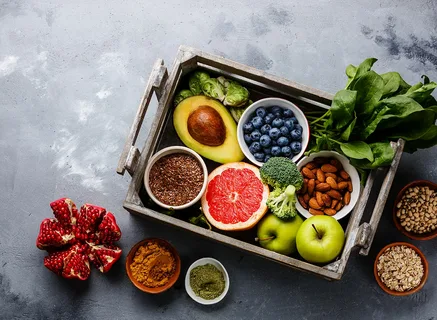Introduction to Vitamin D
Vitamin D is crucial for maintaining healthy bones, supporting immune function, and regulating mood. While sunlight is a primary source of Vitamin D, getting enough through diet is also important, especially for those who have limited sun exposure.
Understanding Vitamin D Sources
Natural Food Sources of Vitamin D
What are some natural sources of Vitamin D in food?
Vitamin D can be found in certain foods, primarily:
- Fatty Fish: Such as salmon, mackerel, and tuna.
- Egg Yolks: Particularly from eggs laid by hens raised with Vitamin D supplementation.
- Beef Liver: Contains small amounts of Vitamin D.
- Cheese: Some cheeses like Swiss and cheddar can provide Vitamin D.
- Mushrooms: Certain types of mushrooms, especially those exposed to sunlight or UV light during growth, can synthesize Vitamin D.
Fortified Foods
What are fortified foods and how can they contribute to Vitamin D intake?
Fortified foods have Vitamin D added to them. Common fortified foods include:
- Fortified Milk: Cow’s milk and plant-based milk alternatives (like soy or almond milk) often have added Vitamin D.
- Fortified Breakfast Cereals: Many cereals, especially those marketed as healthy or fortified, contain added Vitamin D.
- Fortified Orange Juice: Some brands of orange juice are fortified with Vitamin D.
Tips for Maximizing Vitamin D Intake
Dietary Strategies
How can I adjust my diet to increase Vitamin D intake?
- Include Fatty Fish Regularly: Aim to consume fatty fish such as salmon or mackerel at least twice a week.
- Choose Fortified Foods: Opt for milk, cereals, and juices that are fortified with Vitamin D.
- Use Vitamin D-Fortified Cooking Oils: Some cooking oils are fortified with Vitamin D, making them a convenient way to boost intake.
- Add Eggs and Mushrooms: Incorporate egg yolks and Vitamin D-enriched mushrooms into your meals.
Sunlight and Vitamin D Synthesis
Is sunlight exposure necessary for getting Vitamin D?
Yes, sunlight exposure triggers Vitamin D synthesis in the skin. Spending about 10-30 minutes in the sun, without sunscreen, a few times a week can help maintain adequate Vitamin D levels. Factors like skin tone, geographic location, and time of day affect how much Vitamin D your body can produce from sunlight.
FAQs about Vitamin D Intake
1. Can I get enough Vitamin D from diet alone?
While diet can contribute to Vitamin D intake, it’s often challenging to get sufficient amounts without sunlight exposure or supplements, especially during winter or in regions with limited sunlight.
2. What happens if I don’t get enough Vitamin D?
A deficiency in Vitamin D can lead to weakened bones (osteoporosis), increased risk of fractures, compromised immune function, and mood disturbances.
3. Are there risks associated with too much Vitamin D from diet?
Excessive Vitamin D from food sources alone is rare, but excessive intake from supplements can lead to toxicity, causing symptoms like nausea, vomiting, and weakness.
4. Should I take Vitamin D supplements if I can’t get enough from my diet?
If you struggle to meet your Vitamin D needs through diet and sunlight, supplements may be recommended. Consult with a healthcare provider to determine the appropriate dosage.
5. Are there specific dietary restrictions that affect Vitamin D absorption?
Certain conditions, like celiac disease or Crohn’s disease, can impair the absorption of fat-soluble vitamins like Vitamin D. Managing these conditions effectively may help improve absorption.
6. Can I get Vitamin D from plant-based sources?
Most plant-based sources of Vitamin D are fortified, such as fortified plant milks and cereals. Natural sources like mushrooms exposed to UV light are also available.
7. How does cooking affect Vitamin D content in foods?
Cooking methods like grilling or sautéing fatty fish and mushrooms can affect Vitamin D levels. However, most Vitamin D in fortified foods remains stable with typical cooking methods.
8. Is Vitamin D intake different for children compared to adults?
Children often require less Vitamin D than adults, but their needs can vary based on age, growth stage, and individual health conditions. Pediatricians can provide guidance tailored to children’s needs.
9. Can Vitamin D be stored in the body?
Vitamin D can be stored in fat tissues for future use. This storage helps maintain adequate levels during periods of limited sunlight exposure or dietary intake.
10. How can I monitor my Vitamin D levels?
Blood tests can measure your Vitamin D levels. Healthcare providers use these tests to assess whether you’re getting enough Vitamin D or if supplementation is necessary.
Conclusion
Ensuring sufficient Vitamin D intake is crucial for overall health, particularly bone health and immune function. By incorporating Vitamin D-rich foods and fortified products into your diet, along with sensible sun exposure, you can maintain optimal Vitamin D levels year-round.

